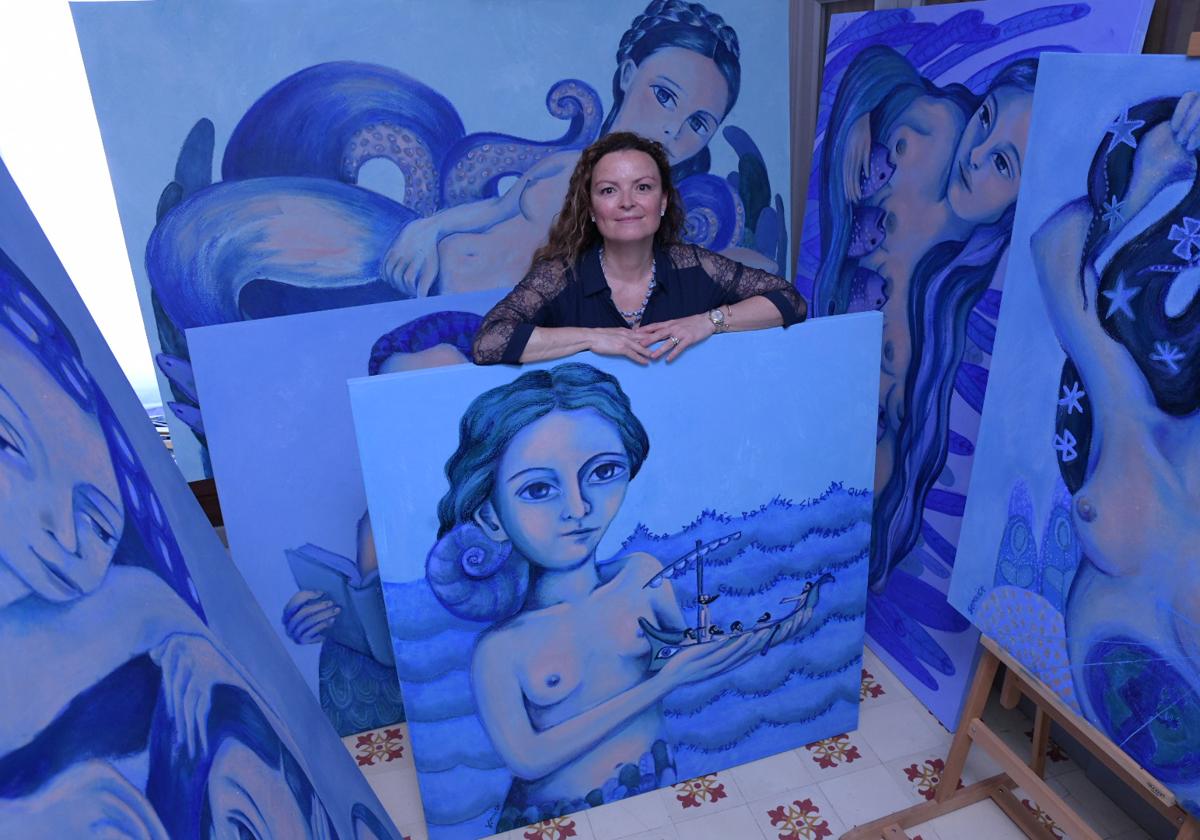Sómnica Bernabeu Gives Voice to the Sirens
The Alicante artist captures her reflections on myths, legends, and thoughts surrounding these knowledge-laden creatures on canvas.
Adrián Mazón
Alicante
Wednesday, 4 June 2025, 07:26
Entering her studio is like diving into the depths of the sea. Seven large canvases, in various sizes, evoke the anchorage brought by the passage of centuries. From the exploits of Ulysses and Jason, with the carnal spirit of the medieval era in between, to the inspiration of Hans Christian Andersen. Always, of course, with a gaze towards nature and the ecosystem, reflected through multiple and careful strokes.
'Songs of the Siren' is the new exhibition by Alicante artist Sómnica Bernabeu, with which she gives voice to the sirens. The artist has created a dozen creatures with which she is able to reflect, through a new perspective, on the myths, legends, and thoughts that have surrounded these zoomorphic beings for ages. All of them will coexist from June 5th at the Pozos de Garrigós, in the Museum of Water of Alicante.
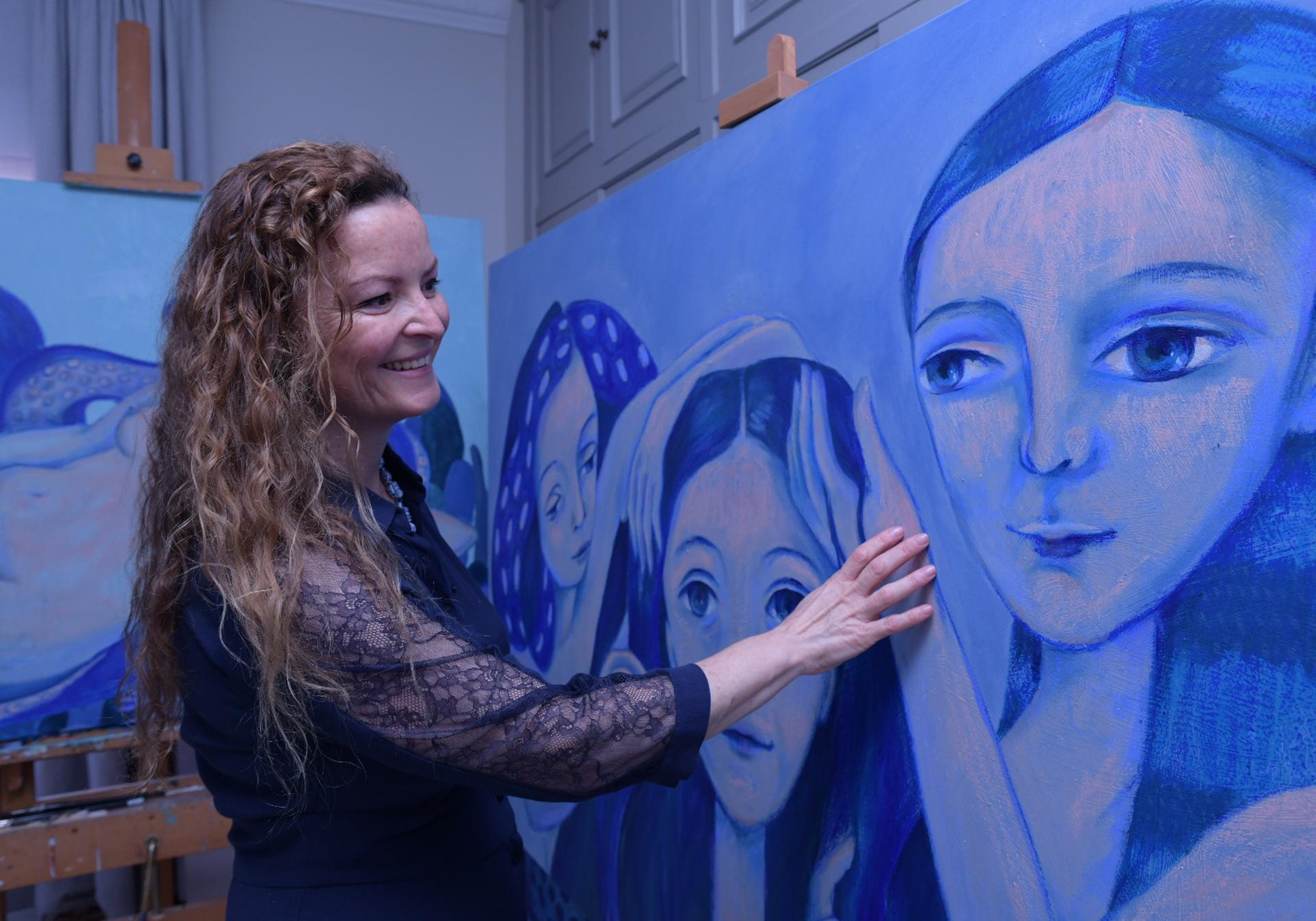
In this new series, painted in oil because Sómnica Bernabeu holds great respect for classical techniques, she reinterprets sirens at various moments in history. To capture the "turning point" these creatures have experienced in different eras, the artist plays with the Pozos de Garrigós, in whose cistern she creates a chronological line to explain "the implications that man has given them beyond myths".
Thus, like a library mouse, the artist has delved into multiple ancient texts, also recovering the voices of all those who were intoxicated by the curiosity of the sirens. During the research process, among books and manuscripts with sea views and many notes in her sketchbook, she takes the opportunity to denounce the "many centuries of misogyny" that sirens have suffered. Through symbolism, Sómnica Bernabeu navigates the waves to also speak of the difficulties faced by women.
When Sirens Had Wings
If Sómnica Bernabeu's brush stands out for anything, it is for being able to rediscover the known. The Alicante artist is capable of reinterpreting myths, legends, and all kinds of eras to leave mere appearances behind. This is what happened in 'Iberian Ladies', and a year later she swims against the current to do the same in 'Songs of the Siren', to show a new vision of creatures that "exemplified men's fear of the unknown".
With the abduction of Persephone, this new series by the artist begins, created specifically for the Pozos de Garrigós. An oil painting measuring 120 by 120 centimetres shows the companions of the daughter of Zeus and Demeter. Already transformed into sirens, with bird bodies as punishment for not protecting the young woman from Hades' clutches, one plays the flute, another the lyre, and the last sings. Bernabeu draws from Pausanias' texts to recreate this first work.
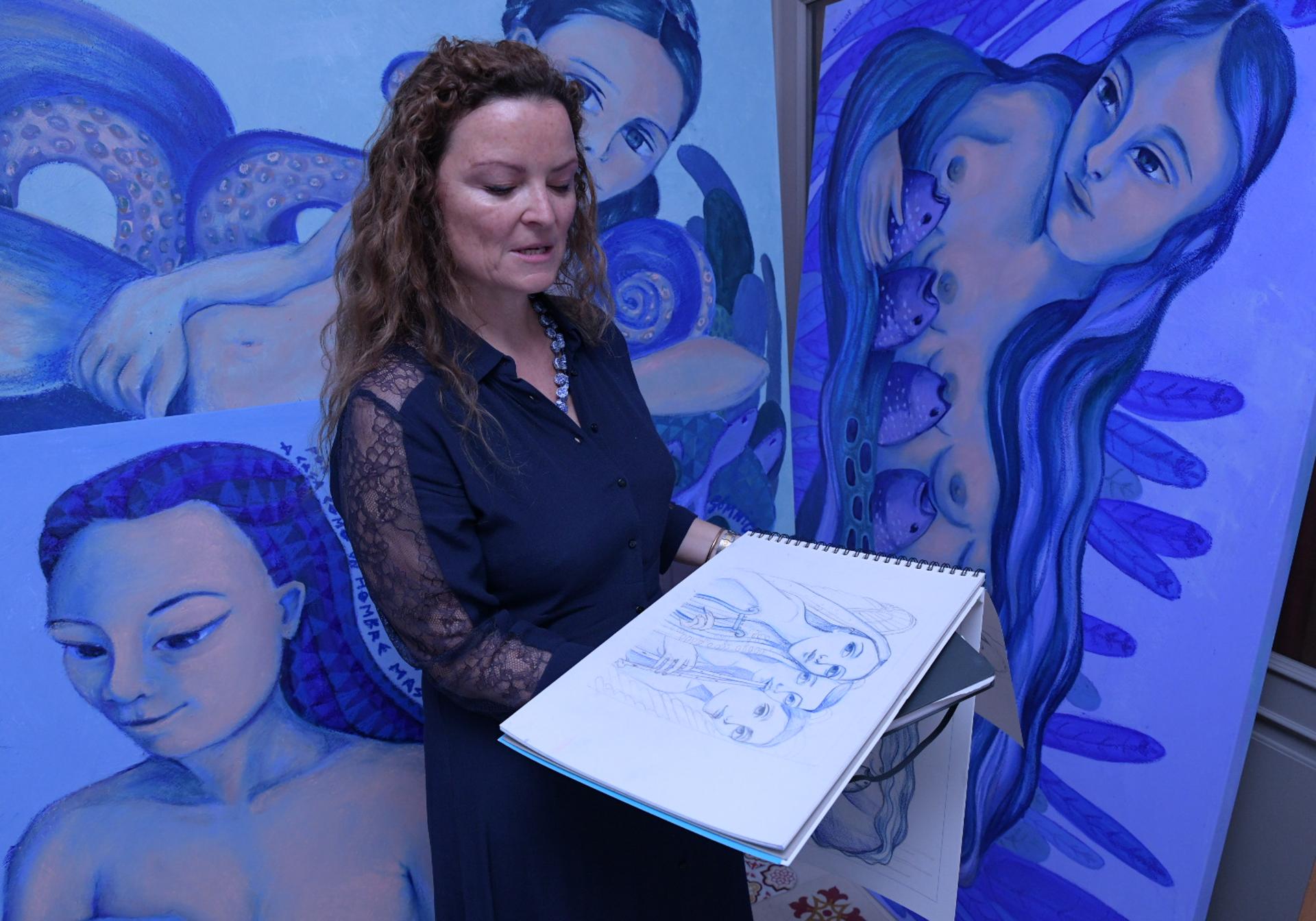
The Greco-Roman tradition and classical mythology blend well in these first steps of the exhibition, which continues with Ulysses' journey after triumphing in Troy, as narrated by Homer in the Twelfth Song of 'The Odyssey'. In its verses, "they symbolize the sailors' fear, granting them a power they did not have," the artist notes in her interpretation of this universal literary work. On the canvas, a siren guides the ship through waves and words, with Ulysses tied to the mast while listening to the sirens.
For her reinterpretation of the myth, Sómnica Bernabeu relies on Cicero. "If he was such a cunning man, capable of deceiving with the Trojan horse, how could he throw himself into the sea to hear a siren's song?" she reflects. "It was a translation error to make the man look good and the woman bad," pointing out that Cicero's essay emphasizes that the sirens' song symbolizes absolute knowledge and wisdom, with women being the bearers of it, which Ulysses wanted to absorb. "It's not that you hear the most beautiful song, but that you become the wisest man; that's why he ties himself to the mast, to access knowledge."
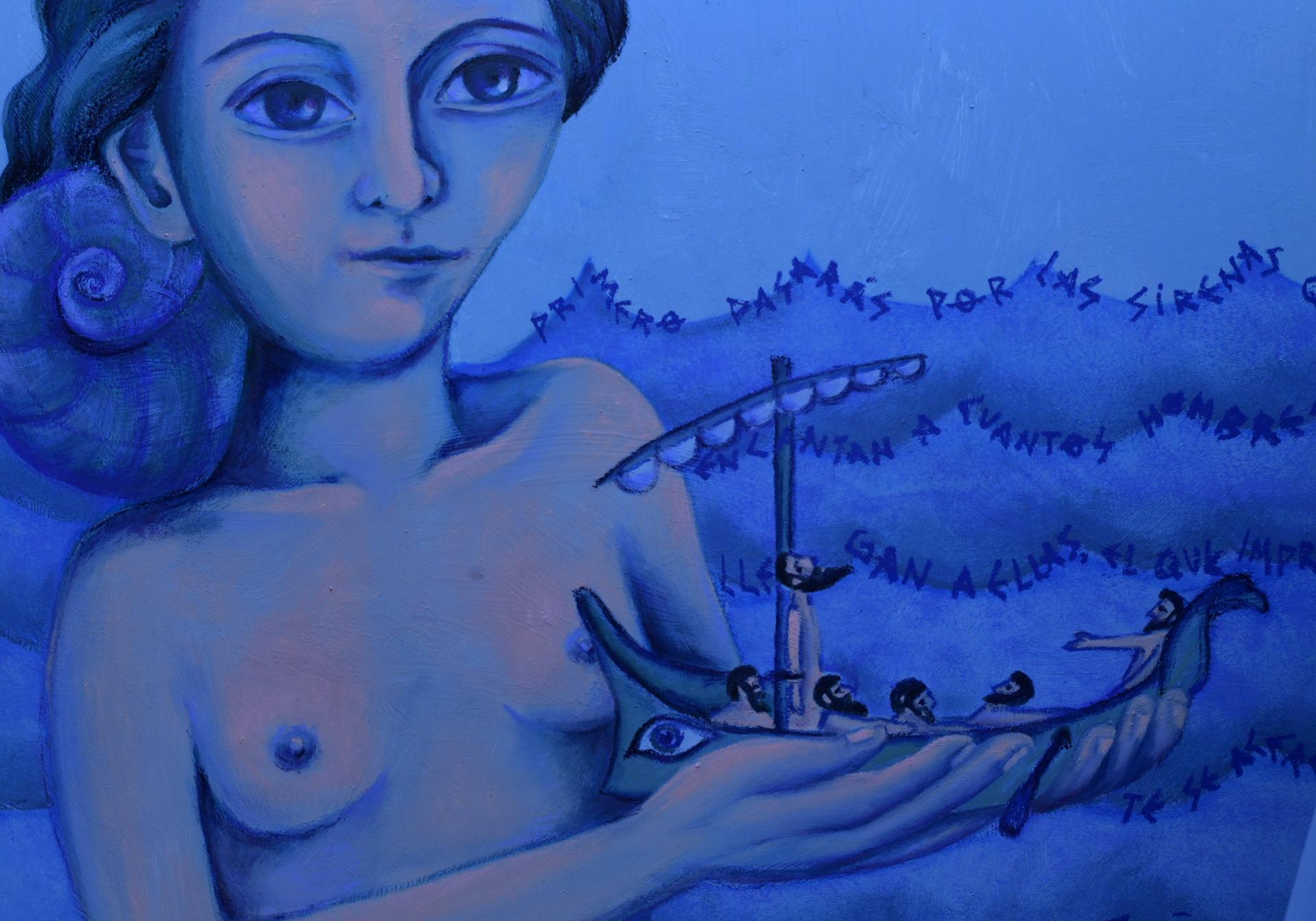
This "translation error" features in another of Sómnica Bernabeu's oil paintings in the first section of 'Songs of the Siren', where one of them holds Cicero's essay. Around her, hanging from the cistern's vault, will appear sirens crafted in clay. With open mouths and held by hooks, the artist has experimented with this technique to narrate "ancient stories, of forbidden loves, from the time when man sailed the sea in search of knowledge".
In these physical characters, which will form a unique installation, she will also combine the same nature by having the sirens engraved on their bodies with stories of leaves, shells, textiles, patterns that form hair, breasts, scales, fins, lips, and eyes, among many others. "It's also my way of painting," confesses Bernabeu, emphasizing that "just as Eve was made from Adam's rib, my sirens emerge from the neighborhood," which "are baked in the fire as Hephaestus created Pandora."
Sirens, Symbol of Carnal Sin
The story continues in 'Songs of the Siren' with a new stage: the arrival of Christianity. While the Greco-Roman tradition granted a new zoomorphic form to these creatures, having the body of a bird or fish with beautiful faces, this religion even gave them octopus legs. But why do these beings also appear during their medieval expansion? Because Catholicism "adopts all the myths of previous religions, from Egyptians to Celts," among many others.
Thus, in the case of including sirens in their imagery, they do not do so by chance, but to give them the concept that "had been given to women of leading men to sin." In this way, these creatures came to represent, during the era, "the sins associated with vanity, selfishness, and the flesh." "They were a warning for the cautious man fearful of temptation," associating them with the origin of lust and sexual temptation.
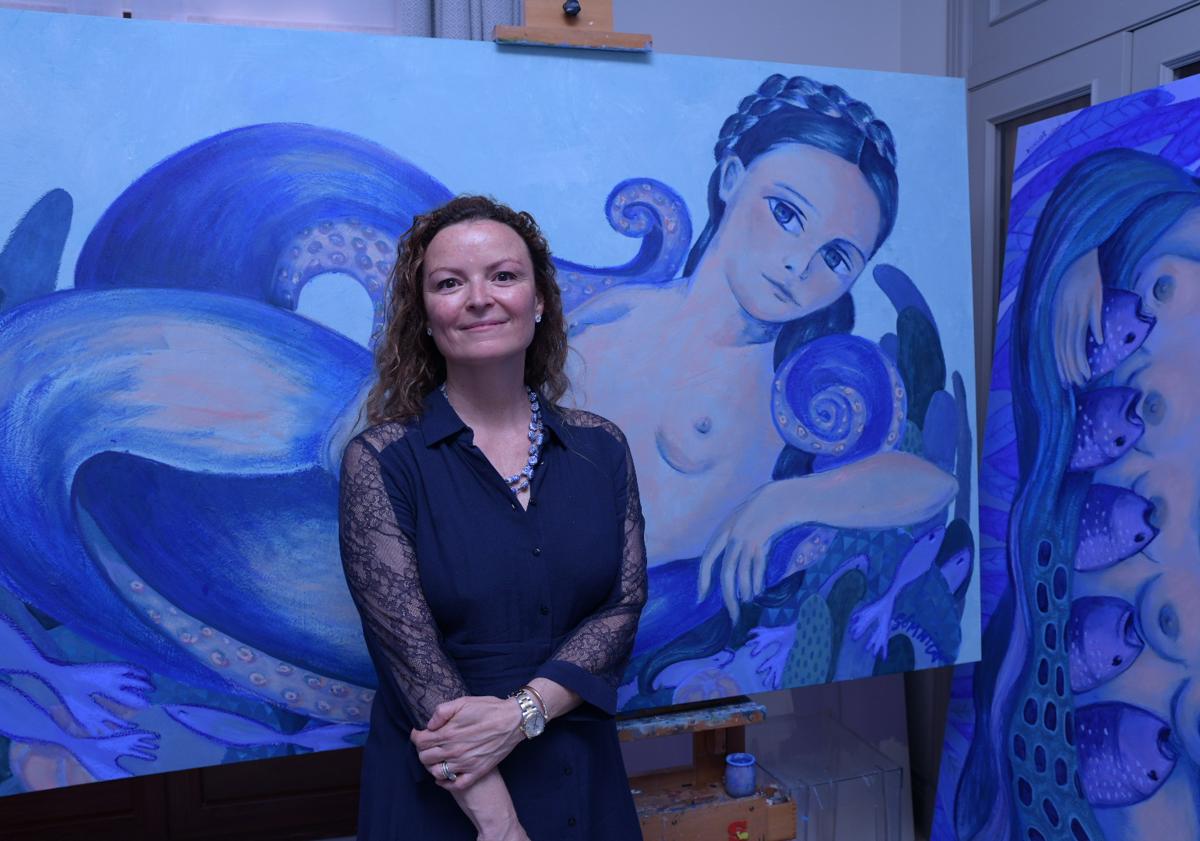
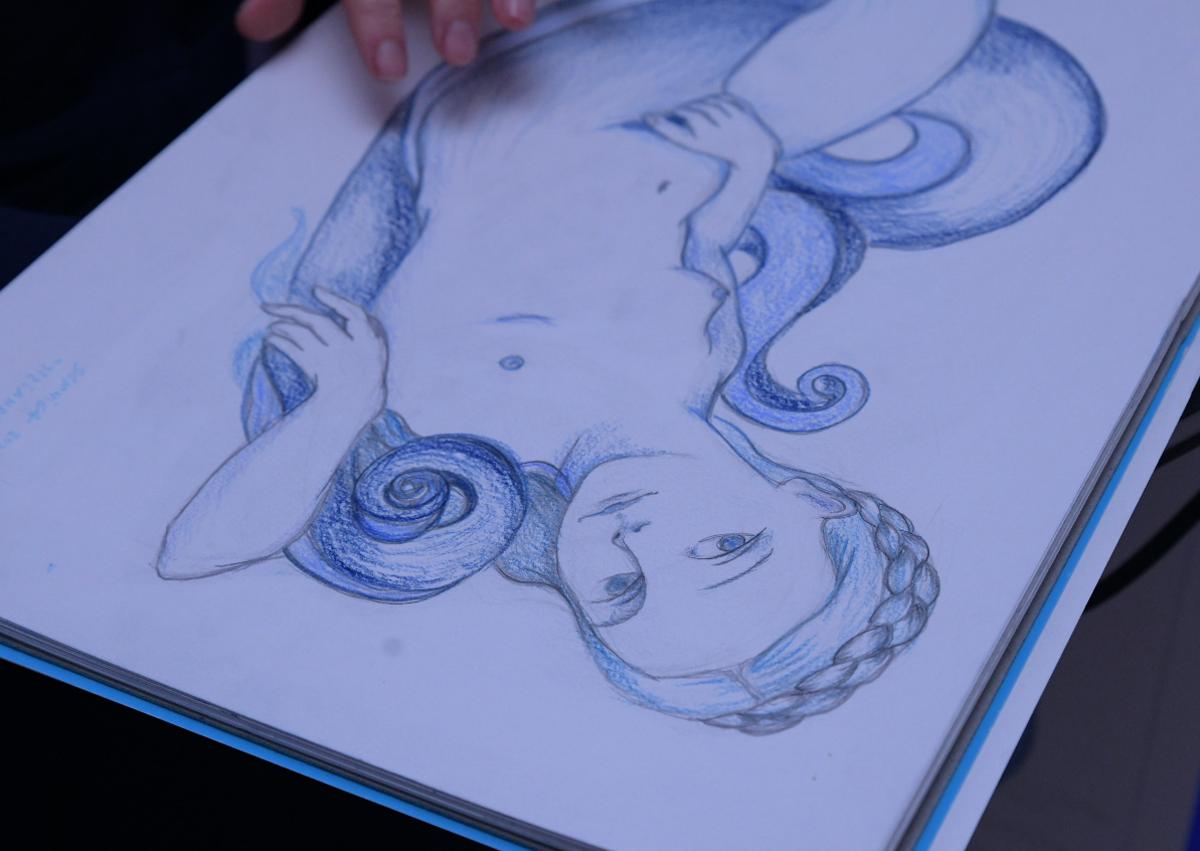
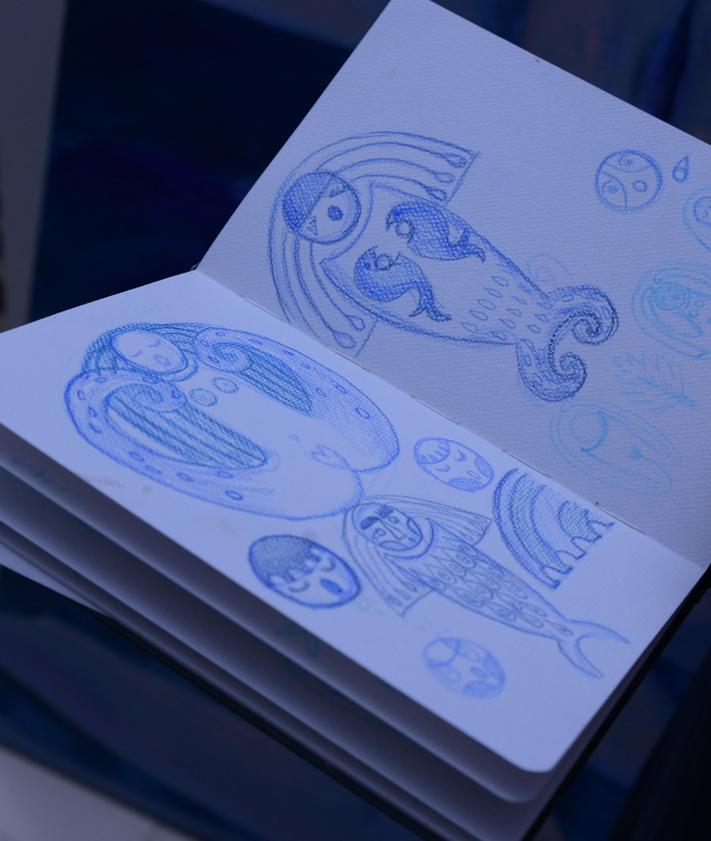
Sómnica Bernabeu herself admits to being fascinated by the era, through the findings obtained in her research process. "I found the text of a bishop, from the time of Pope Luna, in which Ulysses is likened to Jesus Christ." The mast was the cross and the sirens the sin, while his journey home symbolizes how he is able to overcome it, the artist explains after discovering this analogy.
Other interpretations of sirens that have greatly surprised her come from their form. "They have even been given octopus bodies," an image she captures in another of her canvases, in a large one that will be exhibited in the second cistern. "This form allows them to adopt more sexually explicit postures." In her case, Bernabeu has taken the form of the 'Venus of Urbino', a work by Titian, to recreate one of her sirens at this point in history, which prevails in many capitals. "There are sirens and many are octopuses, which allows them to open their legs and incite more to sin."
The Magic of Romanticism
'Songs of the Siren' continues through the centuries and historical stages until reaching the Renaissance, when "myths are recovered, but not entirely the image of the classic siren." It is in Romanticism that these creatures return to their original conception, to those stories where sirens save fishermen. "From there comes the story of Hans Christian Andersen, worked in cinema and more recent art." Sómnica Bernabeu embraces this stage, of "recovering tales" to close her exhibition.
In her case, she does so with an ode to nature, turning sirens into "mother protectors." On one hand, she takes advantage of the rooted posidonia of the Mediterranean to convey this concept to oil, serving as food and sustenance to the sea, especially to this region. The piece also shows several fish feeding on the food provided by this siren.
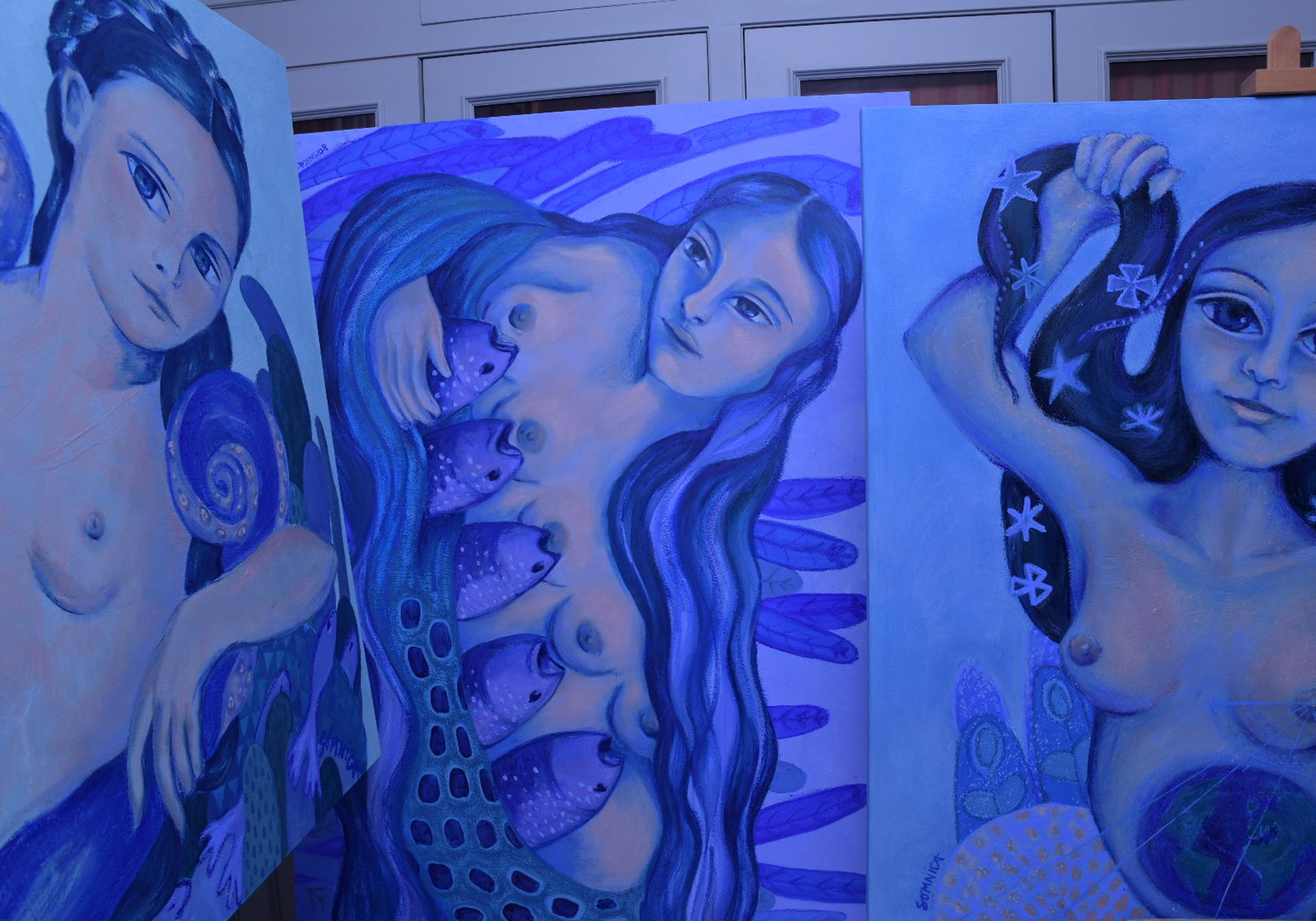
And the culmination appears with Sómnica Bernabeu's latest work, a siren turned into the night embracing the Earth while gestating. On one of her breasts, she carries the sundial of the Co-Cathedral of San Nicolás, "I have reproduced it as it is"; while evoking the same feeling the artist experienced when first entering the Pozos de Garrigós. "It's a womb, it has that magic of protection." Moreover, the hair of this siren carries different stars that symbolize the "brotherhood of religions embracing the Earth," a mysticism in which the concept of the siren as the environment, nature, and mother earth stands out.
With all this, from the beginning of history to the most recent present, Sómnica Bernabeu opens a new perspective with her 'Songs of the Siren', both in the mythological and in the harsh reality. "They are prisoners of the freedom they have been given while playing with the free will of their own decisions. This is how women have felt for centuries," something she captures both with oil and clay within the blue sea she has turned her studio into and will soon take to the Pozos de Garrigós.





